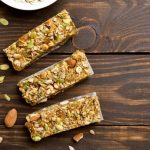Healthy eating is about eating as many foods as possible from all five major food groups in the recommended amounts.
A variety of foods from all five major food groups can provide a variety of nutrients for the body. It can promote good health, reduce the risk of developing a disease, and keep your diet varied with different flavors.
Many foods in modern diets don’t belong to the five food groups. These foods are sometimes called ‘junk foods,’ ‘discretionary foods,’ or ‘occasional food.’ However, they should not be included in a healthy diet. Oils and fat have high kilojoules, which is energy. However, they are necessary to maintain a healthy diet in small quantities.
It doesn’t matter where you are starting from. It’s simple to make small changes to align your diet with the Australian Dietary Guides. Focus on the five major food groups, and reduce your intake of other foods.
Five major food groups
The Australian Guide to Healthy Eating divides the food that should be part of our daily diet into five major food groups.
These are the five food groups:
Vegetables and legumes/beans
fruit
lean meats, poultry, eggs, tofu, and nuts, as well as legumes and beans
Cereal (grain) foods, mainly wholegrain or high-cereal fiber varieties
milk and yogurt, cheese, or other alternatives, most of which are reduced in fat.
Because they contain similar amounts of critical nutrients, foods are often grouped. The essential nutrients in milk, yogurt, and cheese, as well as protein and calcium, are the most important. However, the fruit group provides a great source of vitamins, particularly vitamin C.
A varied and balanced diet involves eating different foods in the recommended quantities daily. Other foods have different amounts and types of critical nutrients, so you must choose different foods within each food group. You will find that your meals are more interesting if you select various food options.
Occasional food
Because they are not essential for healthy eating, some foods don’t fit into the five food groups. These foods are sometimes called “discretionary options” (sometimes referred to as “junk food”) and should be consumed only occasionally.
They are high in added sugars, saturated fat, and alcohol and low in essential nutrients such as fiber.
These foods and drinks may also have high kilojoules (energy). Weight gain can be caused by eating more calories than your body needs.
These are examples of “discretionary choices” or “occasional foods.”
Sweet biscuits, cakes, and desserts
Processed meats and fatty, salty sausages. Savory pastries, pies, and other foods with high fat and salt.
Takeaway food such as hot chips and hamburgers, pizza, and pizza
Sweetened condensed milk
Alcoholic drinks
Ice cream and other ice confections
Confectionary and Chocolate
Commercially prepared fried foods
Chips, crisps, and other fatty or salty snacks foods such as some savory biscuits, potato chips, and crispy
Cream, butter, and spreads high in saturated fats.
Sugar-sweetened soft drinks, cordials, sports drinks, and energy drinks.
You can have some of these foods as an occasional treat. If these foods are replaced with more nutritious and healthy foods, you risk becoming obese and developing chronic diseases such as type 2 diabetes, heart disease, stroke, and other forms of cancer.
Takeaway and restaurant meals
Takeaway and restaurant meals are high in saturated fat, added sodium, added sugars, and kilojoules.
Consider how often you eat food and drink outside your home. Consider cutting down on how often you eat outside the home and focusing your attention more on the five major food groups. You don’t have to stop.
These are some suggestions to reduce saturated fat in take-out food options
Order a take-out meal and skip the fries
You can choose bread-based options such as wraps, kebabs, and souvlaki.
Avoid deep-fried and other pastry options.
Add more vegetables and salad.
To reduce the number of kilojoules, you can share the meals with others or choose smaller portions.
Avoid high-fat, high-salt sauces and toppings such as cheese, fatty meats, and mayonnaise. You can get less.
Instead of cream-based sauces, choose tomato-based pasta dishes.
Get plenty of water.
If you don’t have a side dish, keep your portion size the same.
These fast foods are low in saturated fat and salt.
Pizzas made with less cheese or meat.
Grilled chicken wraps and burgers.
Grilled, lean meat hamburgers without cheese or bacon.
Grilled fish burgers.



